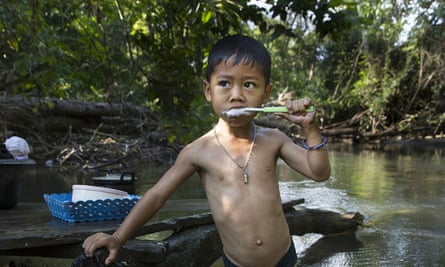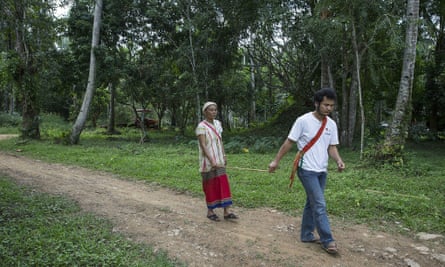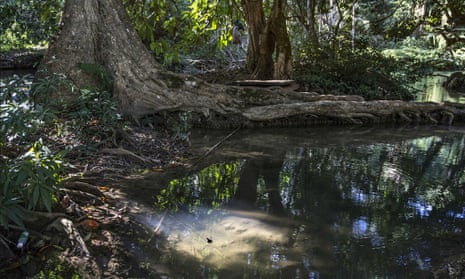Thailand’s anti-pollution agency is ignoring a court decree to clean up toxic lead contamination in a village where residents have suffered developmental and intellectual disabilities and some have gone blind, Human Rights Watch (HRW) has claimed.
HRW said in a report published on Tuesday that the agency had failed to carry out the January 2013 order of the supreme administrative court – the first example of a court ordering the Thai government to clean up a toxic site – at Klity Creek in Kanchanaburi province, known to activists as one of the worst sites of industrial pollution in Thailand.
The HRW report – Toxic Water, Tainted Justice (pdf) – outlines nearly two decades of failure by Thailand’s public health authorities and Pollution Control Department (PCD) to prevent and remediate the exposure of Lower Klity Creek’s 400-odd residents to toxic lead contamination.
For generations the villagers, of the ethnic Karen people, have used the creek for drinking, bathing, fishing and cooking. “Everything we do involves water,” says Pilaipon Salod in a HRW video. “When we wake up in the morning to cook, we use water from the creek. In the evening, we use water from the creek to bathe and wash our clothes. If we don’t use water from the creek, we don’t know where else to go to find water.”
In the mid-1960s a lead processing factory began operations just upstream from the village, discharging its effluent into the water. Villagers continued to use the creek until the fish began to die en masse. Soon residents were noticing health problems: a woman was going blind; children had abdominal pains and were constantly tired; others complained of aching bones.

Pilaipon says her children seem to show the effects of lead poisoning: they are slow to respond, slow to learn at school, slow to understand language. “Sometimes they just sit there and do nothing,” she says. Last time she and her husband were tested for lead in their blood, Pilaipon’s levels came back at 12mcg per decilitre; her husband registered 32mcg. The Center for Disease Control urges public health action be taken at levels beginning at 5mcg.
HRW’s report says that, when the Thai government inspected the village in 1998, it declared villagers’ health normal. But an independent health check of eight villagers found lead poisoning of between 20-48mcg per decilitre. “Those eight people were poisoned,” says medical expert Dr Orapun Metadilogkul of the ministry of public health. “They were poisoned by lead.”
Eventually the villagers took legal action and nearly two years ago came the supreme administative court’s landmark decision, ruling in favour of 22 plaintiffs seeking redress for their ailments.
The court found that the PCD had been negligent in its clean-up of the creek after first learning of the lead contamination in 1998. The court ordered the PCD to pay the plaintiffs some 4m baht (£77,185) and the government to thoroughly clean up the site.
But the government has so far failed to take any action, according to the author of the HRW report, Richard Pearshouse. Children with high levels of lead have not been offered follow-up care, no clean-up has begun, and villagers allege the Thai authorities stopped testing for lead as early as 2008.
“The Thai authorities apparently believe they can ignore a clear court order to clean up the toxic site,” Pearshouse said. “This is one of the most heavily polluted industrial sites in all of Thailand, hundreds of people suffer harm and it needs immediate government action.”

The PCD denies intentionally delaying the clean up, claiming that the creek “cannot be cleaned easily” and requires further tests to ensure the right methods are used. Villagers and activists fear that the PCD is instead waiting for the river to “clean itself”, a process that could take many years.
Klity Creek is just one example of many sites across Thailand where industrial contamination is posing major health risks, says HRW, which lists cyanide, mercury, arsenic and cadmium poisoning as some of the health concerns for Thai citizens living near industrial and mineral extraction sites.
“The Thai government needs to stop ignoring the court order and set out a clear, defined plan with a specific timeline to comply,” Pearshouse said. “A thorough clean up of Klity Creek could help Thailand create a model for cleaning up the many places where extreme industrial pollution damages human health.”
